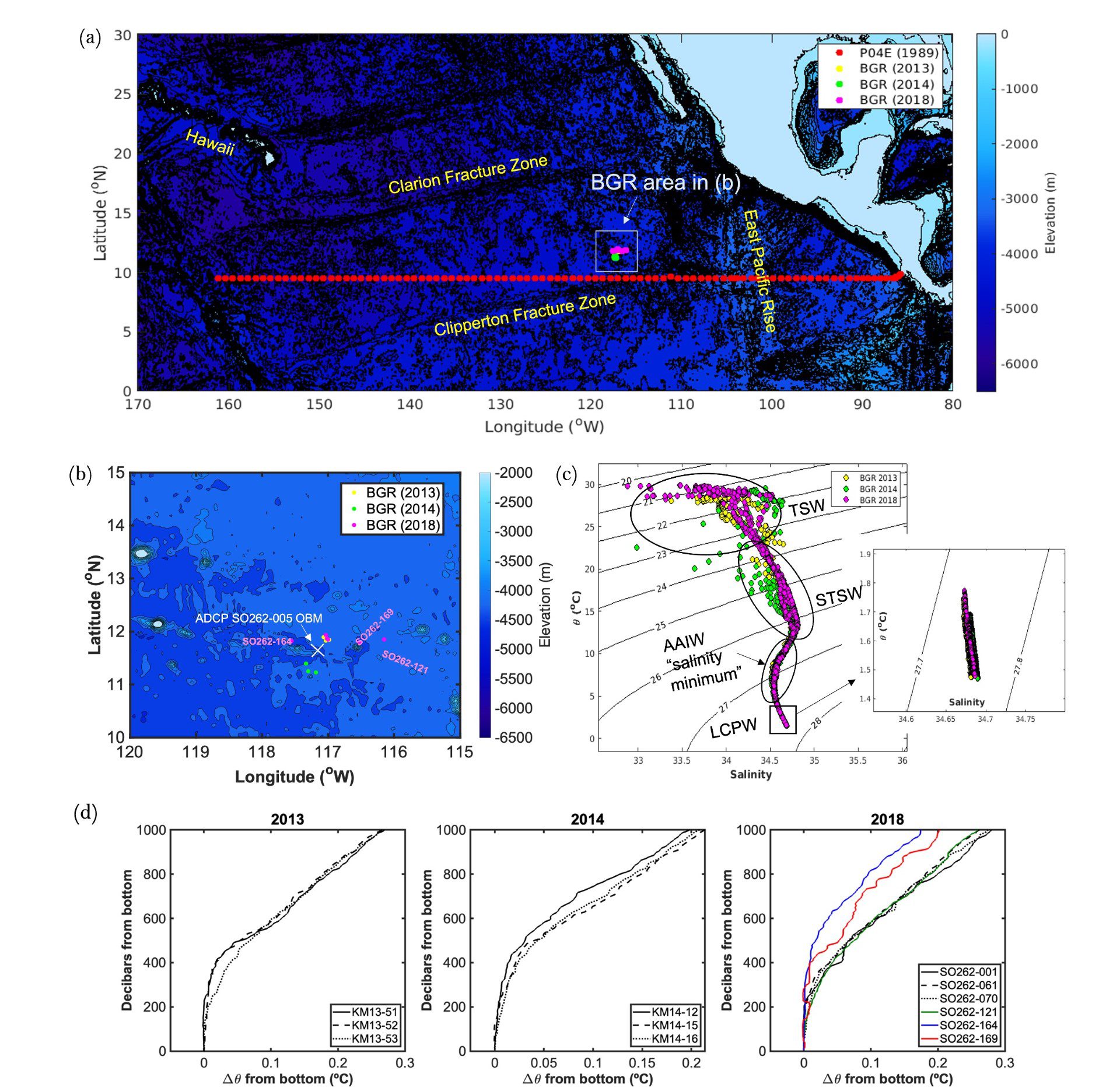Chen, S.-Y. S., Ouillon, R., Muñoz-Royo, C., & Peacock, T. (2023). Oceanic bottom mixed layer in the Clarion-Clipperton Zone: Potential influence on deep-seabed mining plume dispersal. Environmental Fluid Mechanics. https://doi.org/10.1007/s10652-023-09920-6

(Image provided by Sean Chen)
Adjacent to the seabed, the bottom mixed layer is of intrinsic importance for studying ocean mixing, energy dissipation, particle cycling and sediment-water interactions. While deep-seabed mining of polymetallic nodules is anticipated to commence in the Clarion-Clipperton Zone of the north-eastern tropical Pacific Ocean, knowledge gaps regarding the form of the bottom mixed layer and its potential influence on the dispersal of sediment plumes generated by deep-seabed mining activities are yet to be addressed. Here, we report recent field observations from the German mining license area in the Clarion-Clipperton Zone that characterize the structure and variability of the bottom mixed layer locally. Quasi-uniform profiles of potential temperature extending from the seafloor reveal the presence of a spatially and temporally variable bottom mixed layer with an average local thickness of approximately 250 m. Other observations collected from the experimental trials revealed near-bottom abyssal currents and their variability. Later in the study, a simplified transport model is then used to study the influence of the bottom mixed layer on the interplay between turbulent diffusion and sediment settling in the transport of deep-seabed mining induced sediment plumes. Over a range of realistic parameter values, the effects of bottom mixed layer on plume evolution can vary significantly, highlighting that resolving the bottom mixed layer will be a crucial step for accurate numerical modelling of plume dispersal.
